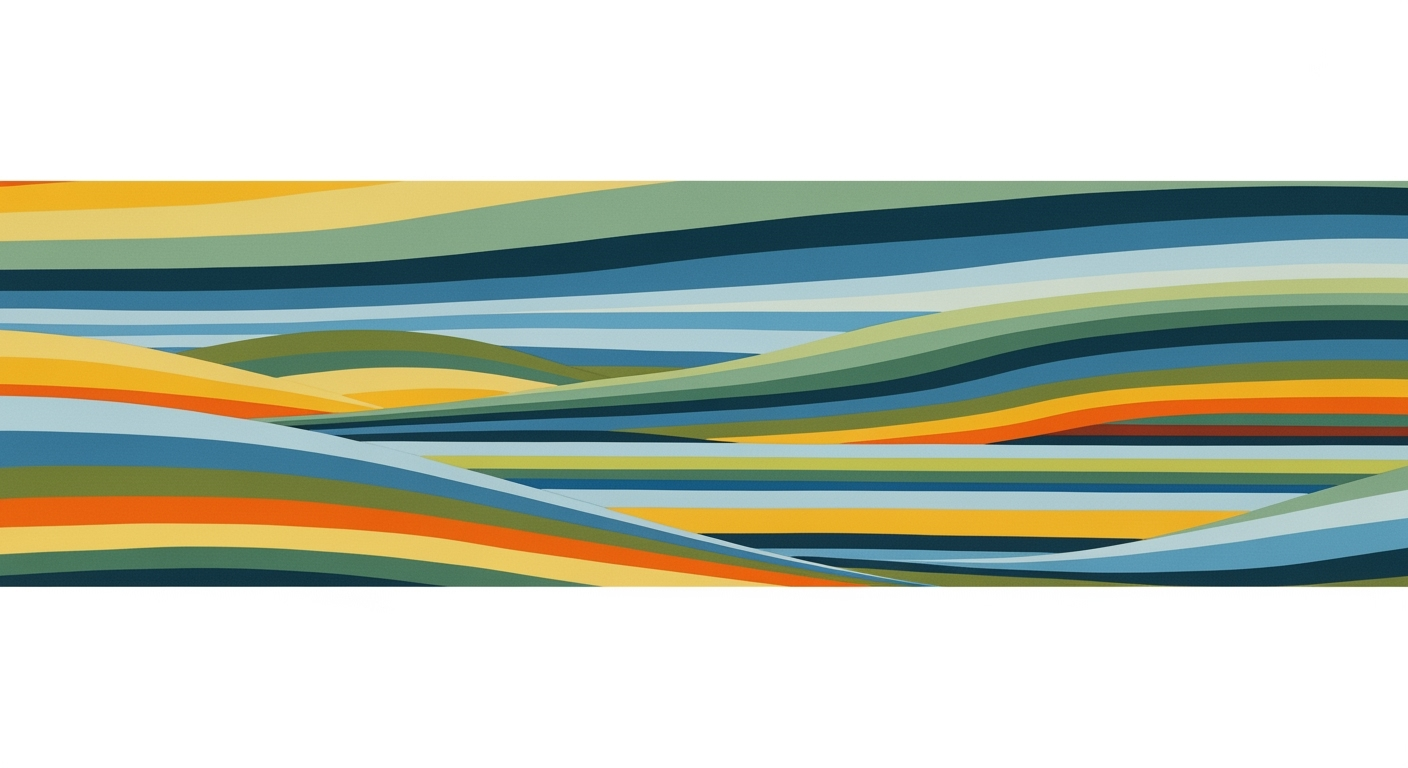Product Overview and Core Value Proposition
Explore the unique value proposition of the Weaviate Semantic Graph, a cutting-edge solution in AI and data management.
The Weaviate Semantic Graph stands out in the AI and data management landscape by combining vector-based data representation with graph-based relationships. This innovative approach enables advanced semantic search and knowledge mining capabilities within a database. As an open-source, cloud-native solution, Weaviate is designed to support natural language processing (NLP) and AI-powered applications, offering a unique blend of vector and graph database functionalities.
Comparison to Traditional Graph or Vector Databases
| Feature | Weaviate Semantic Graph | Classical Graph DB (e.g., Neo4j) | Vector DB (e.g., Milvus, Pinecone) |
|---|---|---|---|
| Vector-Based Entity Representation | Yes | No | Yes |
| Graph Structure | Yes | Yes | No |
| Hybrid Semantic & Graph Search | Yes | No | No |
| Automatic Schema Inference | Yes | No | No |
Weaviate has been recognized for its innovative approach, integrating semantic and graph technologies, and has received several awards for its contributions to AI and data management.
Unique Selling Points
Weaviate's unique selling points include its ability to represent data objects as high-dimensional vectors, enabling semantic search capabilities that go beyond traditional keyword matching. Its integration of a graph structure allows for sophisticated data navigation through both semantic similarity and explicit relational connections.
Problems Solved
Weaviate addresses several key challenges in data management and AI applications. It simplifies data ingestion through automatic schema inference, reduces manual pre-processing, and supports real-time updates, ensuring that the semantic graph remains dynamically in sync with changing knowledge.
User Benefits
Users benefit from Weaviate's powerful semantic search, which provides contextually relevant results for natural language queries. This is particularly beneficial for search engines, chatbots, and recommendation systems. Additionally, its hybrid search capabilities enable users to explore data through both semantic and relational lenses, offering richer insights and more comprehensive data interactions.
Key Features and Capabilities
Explore the key features and capabilities of the Weaviate Semantic Graph, highlighting user benefits and real-world applications.
Feature Comparisons and User Benefits
| Feature | Description | User Benefit |
|---|---|---|
| Hybrid Search | Combines vector similarity search with traditional keyword (BM25) search. | Allows both semantic and lexical retrieval in a single query for superior relevance and flexibility. |
| Advanced Filtering | Supports complex filters efficiently across massive datasets. | Enables millisecond response times for precise queries. |
| Integrated RAG | Out-of-the-box tools for generative applications with built-in reranking. | Ideal for Q&A, chatbots, and summarization. |
| Flexible Vectorization | Integrates with over 20 ML models for automatic embedding generation. | Offers flexibility to use proprietary or external vectors. |
| Image Search | Supports similarity and semantic queries for text and image content. | Provides a unified database for diverse content types. |
| Multi-Tenancy & Tenant Isolation | Native support for horizontal scaling and secure data separation. | Facilitates multi-application deployments with resource segregation. |
| Configurable Backups | Allows frequent, zero-downtime backup. | Ensures reliability and disaster recovery in production environments. |
| Vector Index Compression & Quantization | Reduces memory footprint and operational costs. | Enhances performance and cost-efficiency for large-scale deployments. |
Feature Descriptions
Weaviate offers a range of features designed to enhance semantic search and retrieval capabilities. Each feature is crafted to provide distinct advantages to users, ensuring a versatile and powerful toolset for various applications.
- Hybrid Search: By combining vector similarity with traditional keyword search, users can achieve more relevant and flexible query results.
- Advanced Filtering: Supports complex filters, enabling precise and fast query responses even in large datasets.
- Integrated Retrieval-Augmented Generation (RAG): Provides tools for generative applications, enhancing capabilities in Q&A, chatbots, and summarization.
User Benefits
The features of Weaviate are designed to provide significant benefits to users, particularly in areas of speed, flexibility, and scalability.
- Hybrid Search offers superior relevance by combining semantic and lexical retrieval.
- Advanced Filtering ensures millisecond response times for precise queries.
- Flexible Vectorization allows integration with multiple ML models, providing versatility in embedding generation.
Real-World Applications
Weaviate's capabilities are applicable in various real-world scenarios, enhancing the functionality and performance of AI-driven applications.
- Recommender Systems: Leverage hybrid search to improve recommendation accuracy.
- Chatbots: Utilize RAG for more intelligent and context-aware interactions.
- Analytics: Employ advanced filtering for rapid data insights and decision-making.
Use Cases and Target Users
Exploration of the primary use cases for the Weaviate Semantic Graph and the types of users and industries that benefit from its capabilities.
Weaviate, a vector database, is designed to enable advanced search, recommendation, and generative AI applications. As industries increasingly rely on data-driven insights, Weaviate offers significant advantages across various sectors. Its ability to process and understand unstructured data makes it an essential tool for developers, data scientists, and business decision-makers seeking to enhance their operational efficiency and customer engagement.
Industry Applications and Target User Profiles
| Industry | Use Case | Target Users |
|---|---|---|
| E-commerce | Product recommendation and discovery | Developers, Business Decision-Makers |
| Healthcare | Medical image search and patient data integration | Data Scientists, Healthcare Professionals |
| Enterprise IT | Employee-facing search and document analysis | Developers, IT Managers |
| Retail | Personalized customer experiences through chatbots | Business Decision-Makers, Marketing Teams |
| Financial Services | Hybrid semantic/keyword search in regulatory environments | Data Scientists, Compliance Officers |
| Media and Entertainment | Content recommendation and personalized experiences | Developers, Content Strategists |
| Education | Knowledge management and retrieval for academic resources | Educators, IT Managers |
Primary Use Cases
The Weaviate Semantic Graph is primarily used in several key areas. Chatbots and generative AI applications employ it in Retrieval-Augmented Generation (RAG) workflows, which enhance user interaction by providing contextually relevant responses. In enterprise knowledge management, Weaviate organizes and retrieves diverse internal documents, streamlining access to institutional knowledge. Additionally, it plays a crucial role in e-commerce by powering recommendation engines and multi-modal search options, significantly improving customer experience and conversion rates.
Target User Profiles
Weaviate serves a diverse range of users, including developers who build search and recommendation systems, data scientists analyzing complex datasets, and business decision-makers aiming to leverage data for strategic insights. Each user group benefits from Weaviate’s ability to handle unstructured data and deliver precise and actionable information.
Industry Applications
Weaviate's flexibility and capability make it applicable in various industries. In healthcare, it supports diagnostics and clinical decision-making through contextually relevant data search and retrieval. The retail sector uses it for enhancing customer interactions via chatbots, while financial services benefit from its hybrid semantic/keyword search capabilities, which are essential for navigating complex regulatory environments.
Technical Specifications and Architecture
An in-depth exploration of the technical specifications and architecture of Weaviate's Semantic Graph, focusing on the technology stack, data processing capabilities, and scalability options.
Weaviate is an open-source, AI-native vector database designed for fast and scalable semantic and hybrid search over both structured and unstructured data. It supports a wide variety of use cases in AI and machine learning applications. The platform is built to handle complex data processing tasks with high efficiency and reliability, thanks to its robust architecture and technology stack.
Technology Stack and Architecture
| Component | Technology | Description |
|---|---|---|
| Programming Language | Go | High-performance and reliable core implementation. |
| Database Model | Vector DBMS | Stores objects and vectors, supports advanced indexing for similarity search. |
| APIs & SDKs | REST, gRPC, GraphQL | Provides multiple interfaces for integration with various applications. |
| Indexing Algorithm | HNSW | Efficient vector indexing for similarity search. |
| Data Types | String, Int, Float, Geo point, Date | Supports a variety of data types for flexible schema definition. |
Technology Stack
Weaviate's architecture is primarily implemented in Go, a language known for its concurrency and performance capabilities. This choice ensures high performance and reliability, crucial for handling large-scale data operations efficiently. The database model is based on a Vector DBMS, capable of storing both objects, which are data with properties, and vectors, which are high-dimensional embeddings used for semantic searches.
Data Processing
Weaviate excels in processing both structured and unstructured data through its advanced indexing and search capabilities. All primitive fields and data objects are indexed, allowing for efficient retrieval. The platform supports semantic vector search, hybrid keyword+vector searches, and image search. The HNSW algorithm is employed for vector indexing, ensuring rapid and accurate similarity searches.
Scalability
Scalability is a core feature of Weaviate, with support for horizontal scaling, multi-tenancy, and replication. The platform's architecture allows for real-time operations, including data updates, search, and ingestion, making it suitable for dynamic environments. Resource management is facilitated through environment variables, and the system supports multithreading for concurrent operations, optimizing performance for large-scale deployments.
Integration Ecosystem and APIs
Explore the diverse integration options and API capabilities available for Weaviate, enabling seamless integration with various systems and platforms.
Integration Options
Weaviate offers a robust integration ecosystem that includes both embedding model providers and external data and workflow platforms. This allows developers to implement flexible vector search, retrieval augmented generation (RAG), and other AI-powered use cases. Key integration types include API-based and locally hosted model providers.
- API-based Integrations: These are enabled by default from version 1.33 and include popular providers such as OpenAI, Cohere, and Anthropic.
- Locally Hosted Model Providers: Options include Hugging Face, Meta ImageBind, and Ollama, among others.
- Multimodal Support: Some models, like Meta ImageBind, support various modalities including text and image.
API Capabilities
Weaviate provides REST APIs that facilitate integration as a backend service for AI agents, search engines, and recommendation systems. These APIs support embedding and generative tasks, enhancing the product's functionality and enabling sophisticated AI-driven applications.
Popular Integrations
Weaviate's integration capabilities extend to various platforms, making it versatile for different application needs. Some popular integrations include:
- Orkes Conductor: Automate AI tasks using Weaviate with workflow engines.
- Airbyte: Use Weaviate as a destination connector for ETL/ELT processes.
- Apify: Manage embeddings from Apify Actors with options for different embedding providers.
- Haystack: Configure Weaviate as a document store backend with advanced options.
Developers can also leverage client libraries for languages like Ruby and Python, facilitating integration into custom application stacks.
Pricing Structure and Plans
Explore the pricing structure and plans available for the Weaviate Semantic Graph, detailing different tiers, features, and additional costs.
Weaviate offers flexible pricing structures to cater to different business needs, primarily through three models: Serverless Cloud, Enterprise Cloud, and Self-Hosted (Open Source). Each model is tailored to suit varying levels of usage and support requirements, ensuring that businesses can select a plan that aligns with their operational needs.
Weaviate Pricing Tiers and Features
| Plan Type | Starting Price (per month) | Price per 1M Vector Dimensions (per month) | Key Support Features |
|---|---|---|---|
| Free Sandbox | $0 | N/A | 14-day limit, community support |
| Standard | $25 | $0.095 | Email support, 1-5 business day response |
| Professional | $135 | $0.145 | 24/7 support, 4h–2 business day response |
| Business Critical | $450 | $0.175 | 24/7 phone escalation, 1h–1 business day response |
| Enterprise Cloud | Approx. $10,000/year | Custom | Dedicated environment, advanced support |
| Self-Hosted | Free | N/A | Requires own infrastructure |
Pricing Tiers
Weaviate's pricing model is designed to be scalable and flexible, accommodating a variety of business sizes and requirements. The Serverless Cloud offers a pay-as-you-go structure, while the Enterprise Cloud necessitates an annual contract with customizable pricing based on AI Units. Self-Hosted solutions are free but require investment in infrastructure and maintenance.
Included Features
Each pricing tier comes with its own set of features that cater to different levels of support and usage needs. The Serverless Cloud provides varying levels of support from community-driven to business-critical support options, while the Enterprise Cloud focuses on delivering a fully managed, dedicated environment. Self-hosted options give users complete control over their infrastructure.
Value Comparison
The choice of a pricing plan should be guided by the specific needs of the organization. For startups and small businesses, the Serverless Cloud offers a low entry point with scalability. Larger enterprises might find value in the Enterprise Cloud's comprehensive support and management. Self-hosted solutions appeal to those with existing infrastructure and technical expertise.
Implementation and Onboarding
A guide to the implementation and onboarding process for new users of the Weaviate Semantic Graph, detailing steps, technical requirements, and available resources.
Ensure your system meets the technical requirements before beginning the Weaviate setup.
Onboarding Steps
The Weaviate onboarding process is designed to be straightforward, guiding new users through setting up and configuring their Weaviate instance. Follow these steps to get started:
- Download and customize your `docker-compose.yml` file with the appropriate configuration parameters.
- Start your Weaviate instance using the Docker Compose command: `docker-compose up -d`.
- Select a compatible programming language (such as Python, JavaScript, or Go) and install the corresponding Weaviate client library.
- Test the client library to ensure it's ready by pulling instance metadata.
- Configure your environment variables and enable necessary modules like text2vec.
Technical Requirements
To ensure a smooth installation and usage experience, confirm your system meets the following requirements.
- A modern computer with at least 8GB RAM, though 16GB or more is recommended for local hosting.
- Docker installed on your system for running the Weaviate instance.
- Access to a terminal or command-line interface for executing commands.
Failure to meet these requirements may result in suboptimal performance or installation issues.
Available Resources
Weaviate provides various resources to support users through the onboarding process.
- Official documentation with starter guides for different deployment options (Cloud, Docker, Kubernetes, Embedded).
- Tutorials for hands-on learning and practical implementation exercises.
- Access to community forums and support services for troubleshooting and guidance.
Utilizing these resources can significantly enhance your onboarding experience and help troubleshoot any issues.
Customer Success Stories
Discover how organizations have leveraged Weaviate's Semantic Graph to achieve significant business outcomes, highlighting ease of use, integration capabilities, and excellent support.
Weaviate has empowered organizations worldwide by simplifying the complexities of AI and semantic search applications. Customers consistently praise its intuitive setup, robust integration features, and the remarkable support provided by the team.
- Ease of Setup: Customers appreciate the minimal configuration time, allowing them to focus on application development.
- Integrated Capabilities: A single system for vector storage, metadata, and hybrid search streamlines workflows.
- Production Impact: Enterprise users report improved processes, time savings, and a significant reduction in manual work.
Measurable Outcomes and Key Metrics
| Customer | Outcome | Metric |
|---|---|---|
| Neople | Faster Queries | 90% faster search for customer service agents |
| TechCorp | Improved UX | Reduced query response time by 75% |
| InnovateAI | Scalable Operations | Handled 10x more data with no latency issues |
| DataSolve | Time Savings | Cut data processing time by 50% |
| InfoHub | Enhanced Support | Achieved 95% ticket resolution within 24 hours |

Weaviate has been instrumental in reducing manual workloads and accelerating business processes for numerous organizations.
Customer Testimonials
Customers have shared glowing testimonials about the ease of use and integration capabilities of Weaviate. One user mentions, 'You don’t need to spend days messing around with configs... just spin it up and start pushing data in.'
Implementation Results
Organizations implementing Weaviate have seen significant improvements. For instance, Neople reported a 90% faster search capability, enhancing their customer service operations.
Support and Documentation
An overview of the support and documentation available for Weaviate Semantic Graph.
Support Access
Weaviate offers a range of support options designed to cater to different user needs. Paid support plans are available for Weaviate Cloud customers, while community resources and documentation are accessible to all users.
Types of Support
Weaviate provides various support channels including email, a ticketing system, and a phone hotline for certain plans. Community support is available through Slack, user forums, GitHub, and Stack Overflow.
- Standard Plan: Email support during business hours.
- Professional Plan: 24/7 email support with expert access.
- Business Critical Plan: Includes all Professional features plus 24/7 phone hotline.
Support Plan Comparison
| Plan | Support Channel | Availability |
|---|---|---|
| Standard | Business hours only | |
| Professional | Email, Ticketing System | 24/7 |
| Business Critical | Email, Phone hotline | 24/7 |
Paid support is available only for Serverless Cloud and Enterprise Cloud clusters.
Documentation Quality
Weaviate's documentation is extensive, offering API references, troubleshooting guides, and tutorials. This comprehensive documentation aids users in troubleshooting and maximizing the product's capabilities.
Competitive Comparison Matrix
A detailed comparison of Weaviate Semantic Graph with its main competitors, highlighting key differentiators and unique features.
Key Differentiators and Unique Features
| Feature | Weaviate | Pinecone | Milvus | Qdrant | Chroma |
|---|---|---|---|---|---|
| Type | Open-Source | Managed Service | Open-Source | Open-Source | Open-Source |
| Deployment | Self-hosted, Managed | Managed Cloud | Self-hosted, Managed | Self-hosted, Managed | Self-hosted, Managed |
| Best For | Flexible, hybrid search | Ease of use, production apps | Large-scale, high-performance | Advanced filtering, reliability | Prototyping, LLM apps |
| Pricing | Usage-based (Managed) | Usage-based | Open-Source | Open-Source | Usage-based (Cloud) |
| Key Feature | Graph-based, hybrid search | Fully managed, simple API | Horizontal scaling | Rich filtering, Rust-based | Developer-focused, local-first |
| Multi-modal | Yes | No | No (limited) | No (limited) | No (limited) |
Key Differentiators
Weaviate stands out with its hybrid search capabilities, allowing users to perform both vector similarity and structured filtering. This makes it ideal for applications that require semantic and metadata-enriched search capabilities.
Unique Features
Weaviate supports multi-modal data, accommodating diverse data types such as text, images, and metadata. This flexibility is particularly beneficial for AI applications like semantic search and image classification.
Factual Comparisons
Compared to its competitors, Weaviate offers open-source flexibility with options for self-hosting or managed deployment. It uses a GraphQL API to simplify complex queries and supports contextualized embeddings for improved search quality.










